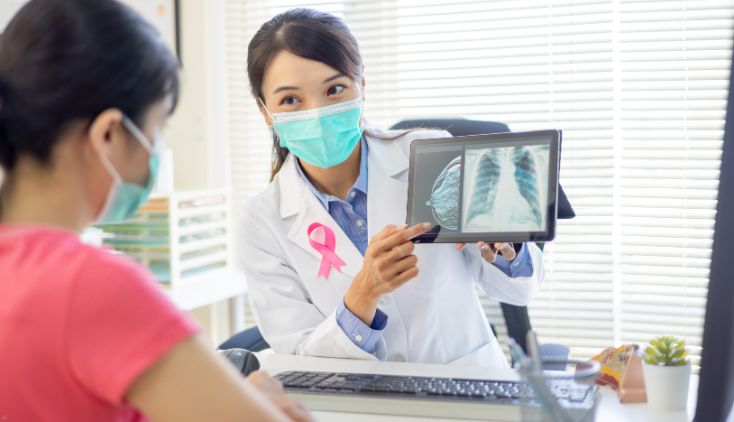Early Diagnosis is the Key to Fast Treatment
Breast cancer is one of the most common types of cancer, affecting millions of people worldwide. Early detection is crucial for successful treatment, which is why it's essential to be aware of the signs and symptoms of breast cancer. While some people may not experience any noticeable symptoms in the early stages, others may experience more obvious warning signs that should not be ignored. This article will explore the first signs of breast cancer and explain why it’s important to pay attention to changes in your body.
1. Lump or Thickening in the Breast or Underarm
One of the most common and well-known signs of breast cancer is a lump or thickening in the breast or underarm area. This lump is often painless, but it may feel firm, irregular or different from the surrounding tissue. Although not every lump is cancerous, any noticeable mass in the breast should be evaluated by a healthcare professional. Breast cancer lumps tend to be hard and immovable, although benign (non-cancerous) lumps are usually softer and more mobile.
2. Change in Size, Shape or Appearance of the Breast
Changes in the size, shape or appearance of the breast can be a warning sign of breast cancer. This might involve one breast becoming noticeably larger or changing its shape. The skin of the breast may also show changes, such as dimpling or a texture that resembles the skin of an orange. These changes may occur gradually or suddenly, and they could be an indication of an underlying issue such as an infection or cancer.
3. Pain or Tenderness in the Breast
Although pain or tenderness in the breast is not always a sign of cancer, it can sometimes be associated with it, especially if the pain persists. Breast cancer-related pain may feel like a constant ache or sharp pain, but it can also occur only when pressure is applied to the breast. The pain may be localized or affect the entire breast.
4. Unexplained Nipple Discharge
Nipple discharge, especially if it occurs without squeezing the nipple, should always be taken seriously. While it’s common for women to experience nipple discharge during pregnancy or breastfeeding, any spontaneous or abnormal discharge from the nipple, particularly if it’s bloody or clear, can be a red flag for breast cancer. In some cases, the discharge may be associated with a lump in the breast or changes in the appearance of the nipple.
5. Skin Changes on the Breast
Changes in the skin of the breast are another potential sign of breast cancer. This can include redness, irritation or visible swelling. Some individuals may also notice a rash or an increase in skin temperature. These changes may occur along with other symptoms such as dimpling or puckering of the skin. In rare cases, breast cancer can cause a condition called inflammatory breast cancer (IBC), where the skin of the breast becomes red, swollen and warm.
6. Changes in the Nipple
Changes in the appearance of the nipple should be monitored closely. This could involve the nipple becoming inverted (pulled inward), crusting or peeling. In some cases, the nipple may become itchy or develop sores. These changes can be associated with conditions like Paget’s disease of the breast, a rare type of breast cancer that starts in the nipple and spreads to the areola (the dark area around the nipple).
7. Swelling or Lumps in the Armpit or Collarbone Area
Swelling or lumps in the armpit or collarbone area may be a sign that breast cancer has spread to the lymph nodes, which are a part of the body’s immune system. Lymph nodes are often the first place cancer cells spread. If you notice any swelling or lumps in the underarm or near the collarbone, it’s important to have them evaluated by a healthcare provider.
8. Fatigue or Unexplained Weight Loss
Although fatigue and weight loss are not direct signs of breast cancer, they can be indicators that cancer has spread to other parts of the body. Unexplained weight loss and persistent tiredness that isn’t related to lifestyle factors such as stress or lack of sleep may warrant further investigation.
Final Notes
If you experience any of these symptoms it's important to make an appointment with your doctor. Getting an early diagnosis from the first signs of breast cancer is crucial. You'll be able to start treatment sooner and begin your journey towards being cancer-free.
